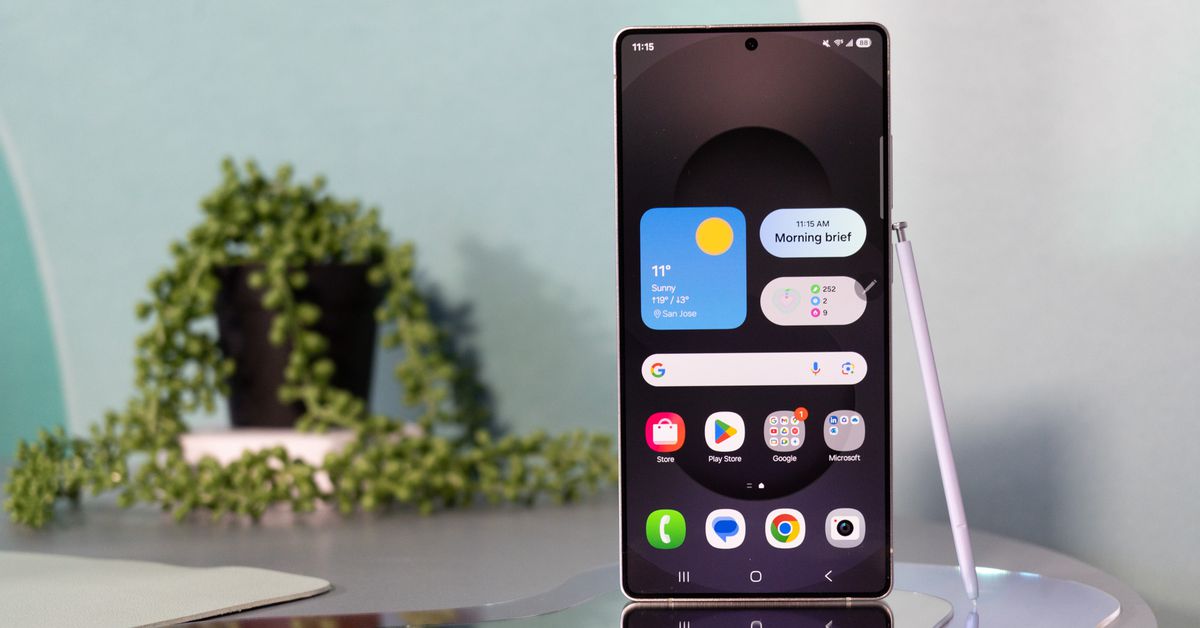Unbreakable Innovation: Exploring Samsung’s Galaxy S25 Ultra Glass Durability
In the fast-paced world of smartphone technology, durability has become a paramount concern for consumers. Enter Samsung’s latest flagship, the Galaxy S25 Ultra, which showcases a groundbreaking innovation in smartphone glass technology. This new glass is designed to withstand drops from head-high heights onto concrete, a feat that could redefine user expectations for smartphone durability. So, can Samsung’s Galaxy S25 Ultra glass truly deliver on this promise? Let’s dive deep into the specifications, the technology behind it, and the implications for consumers.
The Promise of Unbreakable Glass
Samsung has long been a leader in smartphone technology, consistently pushing boundaries with each new release. The Galaxy S25 Ultra is no exception. The focus on creating a glass that can endure significant drops stems from an increasing consumer demand for sturdier devices. With millions of smartphones breaking each year due to accidental drops, Samsung’s innovation could not come at a better time.
The Galaxy S25 Ultra’s glass is engineered with advanced materials that enhance its resilience. Here’s what makes this innovation noteworthy:
- High-Performance Materials: Samsung has utilized a special type of Gorilla Glass that incorporates a unique blend of aluminosilicate, enhancing its strength and scratch resistance.
- Improved Drop Resistance: Testing has shown that the glass can handle impacts from drops of up to 1.5 meters (approximately 5 feet) onto hard surfaces without cracking.
- Lightweight Design: Despite its robust nature, the glass remains lightweight, contributing to the overall sleek design of the Galaxy S25 Ultra.
How Does It Perform in Real-World Scenarios?
To truly understand the effectiveness of the Galaxy S25 Ultra glass, it’s essential to consider real-world scenarios. Samsung conducted extensive drop tests, dropping the device from various heights onto concrete surfaces. The results were promising, showcasing minimal damage even after multiple drops. However, it is important to note that while the glass is designed to be more resistant to breaks, no phone can be deemed completely “unbreakable.”
This leads to an essential aspect of consumer expectations. While the glass durability is impressive, users should still practice caution. Cases and screen protectors will always provide an additional layer of security, and it’s wise to maintain these protective measures. Nonetheless, the advancements in the Galaxy S25 Ultra’s glass technology mark a significant step forward for the industry.
Consumer Reactions and Market Impact
The reception of the Galaxy S25 Ultra’s new glass has been largely positive. Consumers express excitement over the potential for a more durable device, especially those who are prone to dropping their phones. Social media platforms buzzed with discussions about how this development might influence purchasing decisions. Users are increasingly prioritizing durability alongside features like camera quality and battery life.
Moreover, the Galaxy S25 Ultra’s innovative glass could have broader implications for the smartphone market. As competitors observe Samsung’s success, they may be compelled to invest in similar technologies to keep pace. This could lead to a competitive landscape where durability becomes a key selling point, thereby raising the bar for all manufacturers.
Technological Innovations Driving Durability
Behind the scenes, several technological advancements have contributed to the development of more durable smartphone glass. Here are some notable innovations:
- Ion-Exchange Strengthening: This process enhances the glass’s resistance to scratches and impacts by exchanging smaller ions in the glass with larger ones, creating a denser structure.
- Thermal Tempering: The glass undergoes thermal treatment, increasing its strength and making it less likely to shatter upon impact.
- Layered Construction: The use of multiple layers of glass with different properties can help to absorb shock and disperse impact energy.
Comparing the Galaxy S25 Ultra with Previous Models
Samsung’s Galaxy S25 Ultra represents a significant leap from its predecessors. The Galaxy S21 and S22 models, while equipped with durable glass, did not exhibit the same level of drop resistance. Users often reported cracked screens due to drops from moderate heights. The introduction of the Galaxy S25 Ultra’s glass technology addresses these concerns directly.
In comparison:
- Galaxy S21: Featured standard Gorilla Glass, which, while strong, was more susceptible to shattering upon heavier impacts.
- Galaxy S22: Improved durability but still faced challenges with drop resistance, particularly in real-world scenarios.
- Galaxy S25 Ultra: The new glass technology boasts superior drop resistance, making it a more attractive option for users looking for longevity in their devices.
The Future of Smartphone Durability
As we look ahead, the Galaxy S25 Ultra’s innovative glass sets a new standard for smartphone durability. It raises questions about how smartphone manufacturers will respond to evolving consumer needs. Will we see a trend where durability becomes a primary feature, just like camera capabilities and battery life?
Additionally, this advancement could pave the way for new materials in smartphone construction beyond glass. Researchers are exploring alternatives like synthetic sapphire and advanced polymers that promise even more durability while maintaining aesthetic appeal.
Conclusion: A New Era for Smartphone Durability
In conclusion, Samsung’s Galaxy S25 Ultra glass represents a remarkable achievement in smartphone technology. Its ability to withstand drops from head-high heights onto concrete not only enhances user confidence but also sets a precedent for future innovations in the industry. As consumers increasingly demand durable devices, this innovation may well change the landscape of smartphones, prompting other manufacturers to follow suit.
While no device is entirely impervious to damage, the Galaxy S25 Ultra’s glass marks a significant step in the right direction, highlighting the importance of durability in the ever-evolving smartphone market. With such advancements, users can look forward to a future where their devices are not only smarter but also tougher.
See more Future Tech Daily

